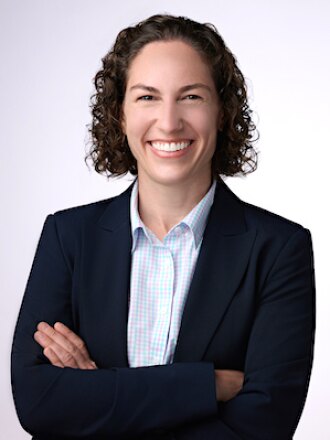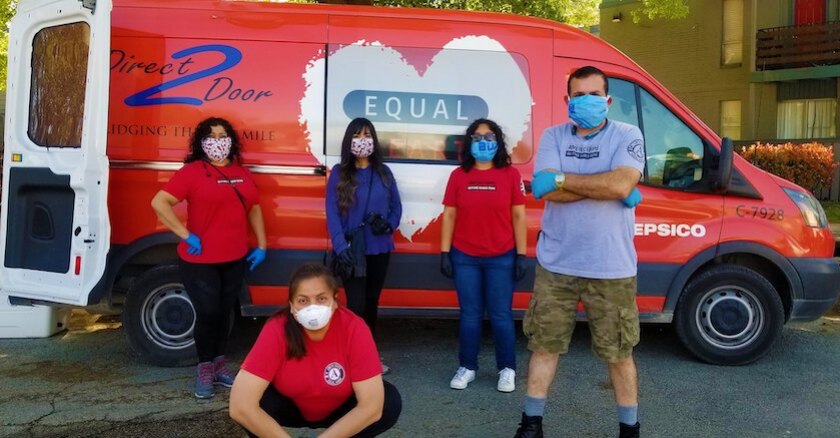There’s potential for a “mass exodus,” says Brian Castrucci, executive director of the de Beaumont Foundation, which conducts the survey in partnership with the Association of State and Territorial Health Officials. If current trends are not reversed, says Castrucci, “It’s going to leave us more vulnerable as a nation than we've ever been.”
It’s difficult to say exactly how many people work in public health at any given moment, says Beth A. Resnick, a senior scientist at the Johns Hopkins Bloomberg School of Public Health. Job titles vary, and they can be scattered across agencies. She may not have a study to prove it yet but, based on what colleagues are saying, the deficit of workers is continuing to grow as pandemic pressures ease (and hostility toward public health workers persists).
“I think some people wanted to stick it out,” she says. “They didn’t want to leave in the middle of the COVID crisis, but when things settled down you started to see a lot of people leaving — at least, that’s what I’ve been hearing anecdotally.”
Resnick was an author of a recent study examining how years of flat or declining public health spending by states limited their ability to mount an effective response to a dangerous new pathogen. She and her co-authors warned that in the absence of substantial and sustained investment, the default approach to public health would remain “neglect, panic, repeat.”
Last May, the Biden administration committed more than $7 billion in American Rescue Plan funds to building a stronger public health workforce. This investment includes $400 million over five years for a “Public Health AmeriCorps.”
In April, $60 million in awards were announced for the first round of this funding. Eighty state and local grantees, in 32 states, have begun to put their plans in motion.

Old Tradition, New Focus
The Centers for Disease Control and Prevention (CDC) is a partner in Public Health AmeriCorps, through its Division of Scientific Education and Professional Development. “We’re able to leverage the expertise of both agencies, capitalizing on AmeriCorps’ experience managing public service and workforce development programs and CDC’s technical expertise,” says AJ Pearlman, director of Public Health AmeriCorps.
The goal is to build on these strengths to respond to local needs, to help corps members discover what a public health career looks like and to give them training and experience that can help them pursue one, she says. In addition to a stipend, participants who complete a specified number of service hours can earn education awards to cover past student loans or pursue additional training.
AmeriCorps was created by the National and Community Service Trust Act of 1993, building on a tradition of service embodied in earlier programs such as the Civilian Conservation Corps, the Peace Corps and Volunteers in Service to America. The first class of 20,000 AmeriCorps members began service in 1,000 communities in 1994. Since that time, nearly a million Americans have served as AmeriCorps members.
The work proposed by grantees includes COVID-19 response but also runs a gamut of public health functions, from increasing health knowledge and providing eviction support to social services and communicable disease investigation.

(Americorps)
All Public Health AmeriCorps members are required to complete a “foundations of public health” training developed in collaboration with the CDC. “We’re providing foundational training, but also informal communities of practice, fellowship programs, mentoring and networking opportunities to support those who we hope will become our next generation of public health leaders,” says Pearlman.
This “next generation” is likely to include mid- and second career members as well as young people. “We are explicitly focused on recruiting members who represent and live in the communities where they will serve — a diverse Public Health AmeriCorps membership will support a diverse public health workforce in the future,” says Pearlman.
On the Ground
The Los Angeles County Department of Public Health (DPH) will use its funds for a three-year program designed to improve health outcomes among vulnerable populations affected by COVID-19 and other diseases. The department has not seen dramatic personnel losses, says Tiffany Romo, health program manager for the DPH. But the pandemic put great stress on public health infrastructure in the nation’s most populous county.
COVID-19 forced a reconsideration of the staffing required to respond to future public health emergencies, including addressing health inequities, says Romo. “We’ve learned a lot of lessons; we definitely need more staff resources and manpower, but there are ways that we could do this work more efficiently and effectively to maximize our impact in the community.”
The DPH’s corps members will help with community outreach, health education and communicable disease investigation. “What’s so great about this work, and the experience that our Public Health AmeriCorps members will have, is that they will be on the ground, talking to residents about their experiences and giving them information,” says Romo.
Corps members will serve in eight regional health offices in L.A. County, disseminating COVID-19 information, addressing questions regarding updated vaccines and eligibility and working to raise awareness of the need to sustain behaviors that can minimize contagion. The focus may vary from region to region, from environmental health issues to STDs and homelessness.
Because of the pandemic, public health is no longer in the background, and Romo is eager to help members discover the diversity of its services. She sees real advantages in recruiting participants of all ages; in some cases, an older outreach worker with more life experience can have greater credibility than an 18-year-old.
“Hopefully, we’ll create a pathway where individuals come in, whether they’re young or in a different phase of their career, get invested in and excited about public health and look at it as a long-term career opportunity.”

(Americorps)
Filling Gaps
Kentucky faced the pandemic with a severely depleted public health workforce. By the time COVID-19 began to spread in earnest, local health departments had less than half the staff they had in 2008, says Dana Cox Nickles, executive director of the Kentucky Health Departments Association (KHDA). The nonprofit association of local health departments was awarded a grant that will enable it to place 75 AmeriCorps members in 61 health agencies throughout the commonwealth.
All participants will be trained as community health workers (CHW), a certification they can take with them when they leave the AmeriCorps program. “That's one of the ways we are trying to increase capacity in our health workforce, using this grant to do that in some small way,” says Nickles.
Once trained, they will assist outreach for core public health programs, including the Special Supplemental Nutrition Program for Women, Infants and Children (WIC), a federally funded effort to provide supplemental food, nutrition education and health-care referral for low-income women, infants and children.
In addition to WIC, members will support a state program for families, called Health Access Nurturing Development Services, which encompasses maternal and child health, child abuse and neglect, domestic violence, family education level and earning potential and childhood development. It revolves around home visits, curtailed by both personnel shortages and the pandemic. Corps members will facilitate both program retention and referrals to needed services.
The community health workers will also help the state combat an increase in deaths from drug overdoses, doing outreach in settings that include jails and emergency rooms regarding syringe services and access to Narcan, used to treat opioid overdoses.
“For a smaller organization like us to get this kind of grant, we’ve just been thrilled,” says Nickles. “We were encouraged to apply by our national association, and we had help writing the grant from state partners who will be helping us with the training. It’s been a joint effort.”
KHDA will move forward in concert with implementation of a legislatively mandated Public Health Transformation in Kentucky which established a new mechanism for funding core public health services.
A Wide Net
An AmeriCorps project at Arizona State University (ASU) takes another approach to growing the public health workforce. Each year, for three years, it aims to provide intensive training on intimate partner violence to 90 or more students from 14 universities in 11 states.
Students will be trained to teach public health agencies, including local clinics, how to help victims of domestic violence who show up at their facilities. It’s often the case that staff don’t know what to do in such situations, says Marina Jessop, a senior program manager at ASU’s School of Social Work.
Students are not required to be enrolled in degree programs that directly relate to this problem, only to have an interest in it. After their virtual training, they will intern in their communities, building capacity within local public health infrastructure to provide appropriate responses to patients or clients who experience abuse from partners.
Intimate partner violence affects citizens of every race, gender, age or socioeconomic status, Jessop says, and rates have gone up during the pandemic. “Even though we have a virtual platform, we’re able to reach all of these students across the nation, and they can go into their communities to help combat the issue,” she says.

(de Beaumont Foundation)
Public Health Remains Underfunded
In August, AmeriCorps opened applications for FY 2023 Public Health AmeriCorps Grants, with the deadline in early January 2023. The program could be especially beneficial to smaller and under-resourced local health departments, says Jen Kates, senior vice president of the Kaiser Family Foundation. “I hope they’re learning about it and that they know this resource is out there.”
As significant as the commitment by the current administration is, it’s short of a permanent national solution. Funding is still not keeping pace with either inflation or basic public health needs, much less surge capacity for another outbreak, says Kates.
The Public Health National Center for Innovations estimates that an 80 percent increase in the state public health workforce, and a 70 percent increase in local departments, are necessary to provide “a minimal set of services that every community needs.” A group of experts convened by the Public Health Leadership Forum concluded that permanent annual investments in public health need to increase almost 70 percent to support foundational capabilities.
Enrollment in graduate and undergraduate public health degree programs has gone up in recent years, but that in itself does not mean the ranks of state and local government health departments will grow. In recent years, graduates of these programs have increasingly taken jobs in the private sector.
“We’ve just lived through the biggest pandemic any of us have ever experienced,” says Kates. “Is that going to inspire more people to seek out careers to make a difference like HIV did, or will the anger misdirected at the public health workforce have a countervailing effect?”
Related Articles













